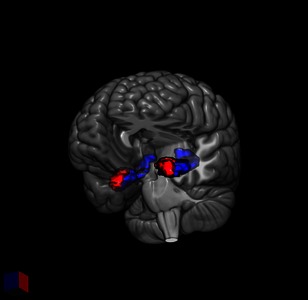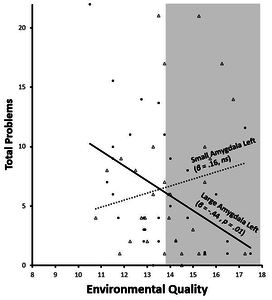Pluess, M;
De Brito, SA;
Bartoli, AJ;
McCrory, E;
Viding, E;
(2020)
Individual differences in sensitivity to the early environment as a function of amygdala and hippocampus volumes: An exploratory analysis in 12-year-old boys.
Development and Psychopathology
10.1017/S0954579420001698.
(In press).

Preview |
Text (Accepted Manuscript)
McCrory_Individual differences in sensitivity to the early environment as a function of amygdala and hippocampus volumes_AAM.pdf - Accepted Version Download (484kB) | Preview |
Preview |
Image (Supplementary Material)
Figure 1_REV2.PNG - Accepted Version Download (64kB) | Preview |
![[thumbnail of Supplementary Material]](https://discovery-pp.ucl.ac.uk/10119147/8.hassmallThumbnailVersion/Figure%202_REV2.png)  Preview |
Image (Supplementary Material)
Figure 2_REV2.png - Accepted Version Download (341kB) | Preview |
![[thumbnail of Supplementary Material]](https://discovery-pp.ucl.ac.uk/10119147/13.hassmallThumbnailVersion/Figure%203_REV2.jpg)  Preview |
Image (Supplementary Material)
Figure 3_REV2.jpg - Accepted Version Download (39kB) | Preview |
Abstract
Children differ in their response to environmental exposures, with some being more sensitive to contextual factors than others. According to theory, such variability is the result of individual differences in neurobiological sensitivity to environmental features, with some individuals generally more affected by both negative and/or positive experiences. In this exploratory study we tested whether left and right amygdala and hippocampus volumes (corrected for total brain size) account for individual differences in response to environmental influences in a sample of 62 boys. Cumulative general environmental quality, ranging from low to high, was measured across the first 9 years and child behavior was reported by teachers when boys were 12-13 years old. According to analyses, only the left amygdala volume - not any of the other brain volumes - emerged as an important brain region for sensitivity to positive environmental aspects. Boys with a larger left amygdala benefited significantly more from higher environmental quality than boys with a smaller left amygdala whilst not being more vulnerable to lower quality. Besides providing preliminary evidence for differences in environmental sensitivity due to brain structure, the results also point to the left amygdala as having a specific role regarding the response to environmental influences.
| Type: | Article |
|---|---|
| Title: | Individual differences in sensitivity to the early environment as a function of amygdala and hippocampus volumes: An exploratory analysis in 12-year-old boys |
| Location: | United States |
| Open access status: | An open access version is available from UCL Discovery |
| DOI: | 10.1017/S0954579420001698 |
| Publisher version: | https://doi.org/10.1017/S0954579420001698 |
| Language: | English |
| Additional information: | This version is the author accepted manuscript. For information on re-use, please refer to the publisher's terms and conditions. |
| Keywords: | amygdala, differential susceptibility, environmental sensitivity, hippocampus, vantage sensitivity |
| UCL classification: | UCL UCL > Provost and Vice Provost Offices > School of Life and Medical Sciences UCL > Provost and Vice Provost Offices > School of Life and Medical Sciences > Faculty of Brain Sciences UCL > Provost and Vice Provost Offices > School of Life and Medical Sciences > Faculty of Brain Sciences > Div of Psychology and Lang Sciences UCL > Provost and Vice Provost Offices > School of Life and Medical Sciences > Faculty of Brain Sciences > Div of Psychology and Lang Sciences > Clinical, Edu and Hlth Psychology |
| URI: | https://discovery-pp.ucl.ac.uk/id/eprint/10119147 |
Archive Staff Only
 |
View Item |


